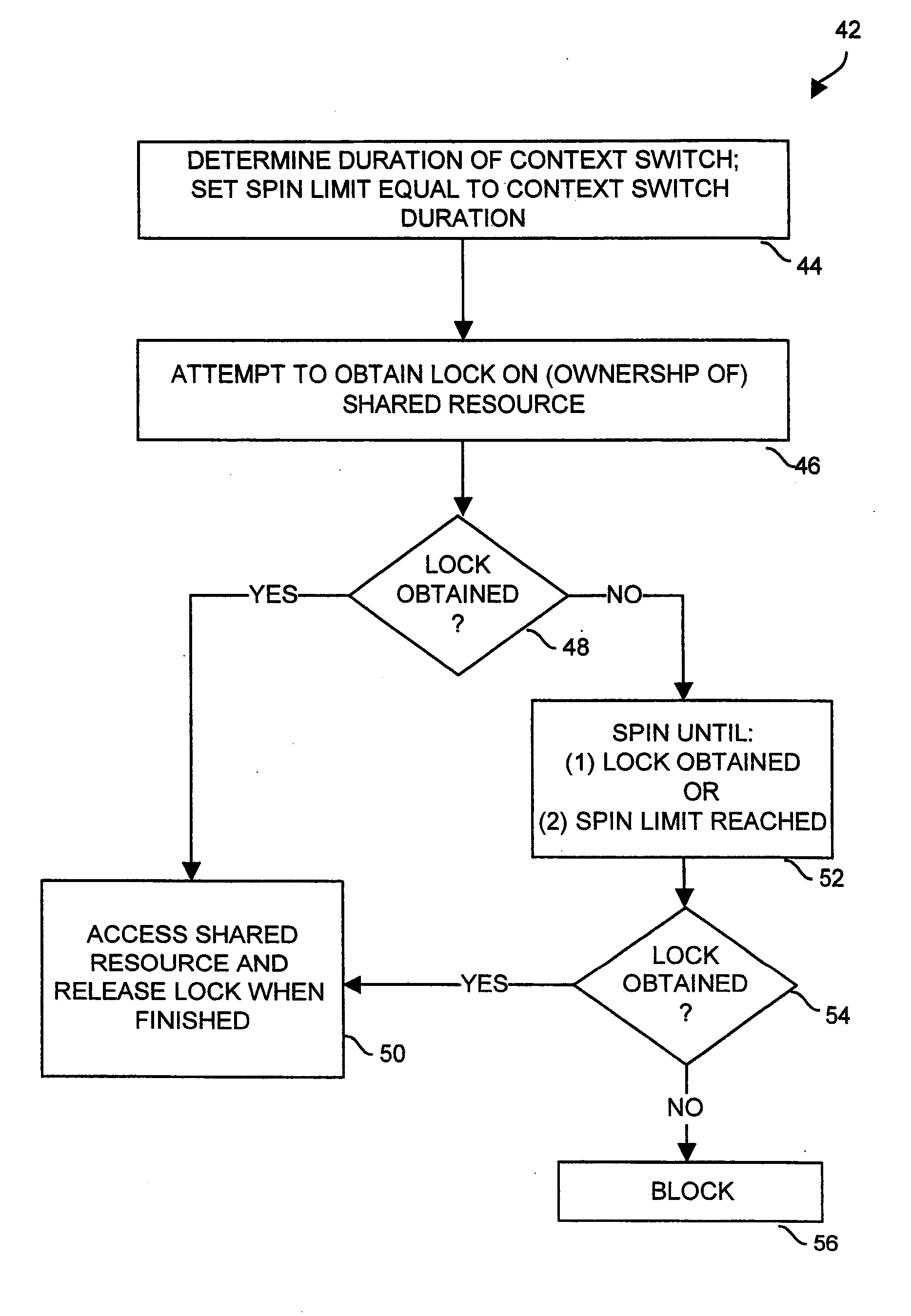Adaptive spin-then-block mutual exclusion in multi-threaded processing
a multi-threaded processing and mutual exclusion technology, applied in the field of multi-processor environment, can solve the problems of inefficient system operation, waste of spinning, blockage, etc., and achieve the effect of reducing cache misses and cache line migration, and less overall delay
- Summary
- Abstract
- Description
- Claims
- Application Information
AI Technical Summary
Benefits of technology
Problems solved by technology
Method used
Image
Examples
Embodiment Construction
)
[0019]FIG. 1 shows a computerized system 20 which includes an interface 22, control circuitry 24, and a shared resource 26. The interface 22 is configured to provide external access to the computerized system 20 (e.g., for a user, for communications with an external device, etc.). The shared resource 26 is a computerized resource of the system 20 which is sharable in a common manner among multiple computerized entities, e.g., threads, processes, processors, clients, etc. The control circuitry 24 operates as a controller of the computerized system 20 to perform certain programmed operations, e.g., to operate the computerized system 20 as a general purpose computer for one or more users, a host, a client or server, a data storage system, a data 25 communications device, a compute engine, etc.
[0020]As shown in FIG. 1, the control circuitry 24 includes a set of one or more processors 28 and main memory 30 coupled to the set of processors 28. The main memory 30 stores a variety of memor...
PUM
 Login to View More
Login to View More Abstract
Description
Claims
Application Information
 Login to View More
Login to View More - R&D
- Intellectual Property
- Life Sciences
- Materials
- Tech Scout
- Unparalleled Data Quality
- Higher Quality Content
- 60% Fewer Hallucinations
Browse by: Latest US Patents, China's latest patents, Technical Efficacy Thesaurus, Application Domain, Technology Topic, Popular Technical Reports.
© 2025 PatSnap. All rights reserved.Legal|Privacy policy|Modern Slavery Act Transparency Statement|Sitemap|About US| Contact US: help@patsnap.com



